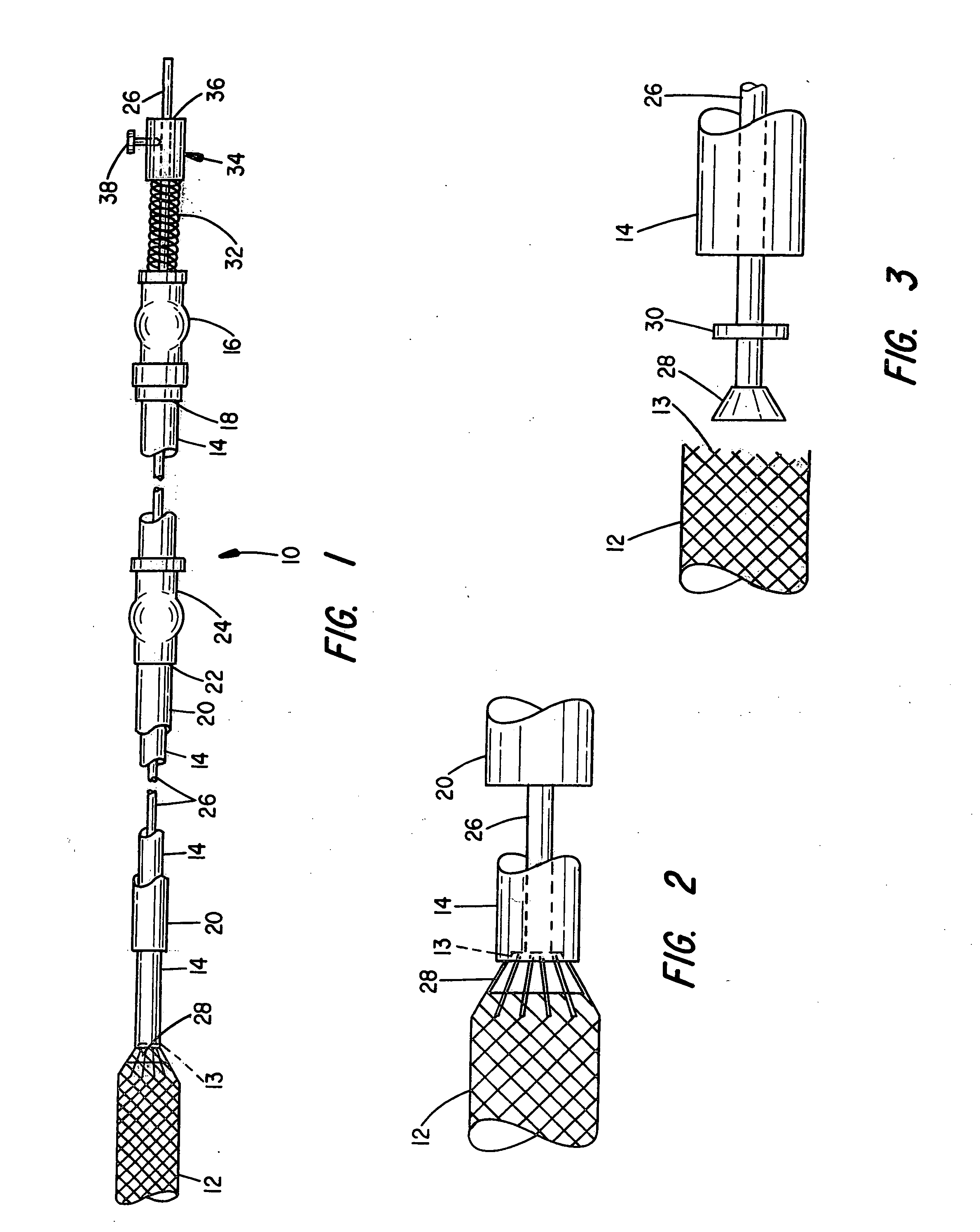System for the controlled delivery of stents and grafts
a graft and controlled technology, applied in the field of percutaneous transluminal vascular procedures, can solve problems such as rendering the graft leak-proo
- Summary
- Abstract
- Description
- Claims
- Application Information
AI Technical Summary
Benefits of technology
Problems solved by technology
Method used
Image
Examples
Embodiment Construction
[0018] Referring first to FIG. 1, the percutaneous translumenal stent or graft delivery system is identified generally by numeral 10 and, as already indicated, is used to deliver a stent or graft member 12 to a target site within the vascular system such as at the location of an abdominal aortic aneurysm for the purpose of exclusion of the aneurysm to prevent further bulging and possible rupture thereof.
[0019] The vascular prosthesis 12 is preferably formed of a metal fabric exhibiting an expanded configuration and a collapsed configuration. The prosthesis, when collapsed, can be deployed through the lumen of a catheter and, upon exiting the distal end of the catheter at a target site in a patient's vascular system, will substantially return to its expanded configuration.
[0020] As is described in U.S. Pat. No. 5,725,552 to Curtis Amplatz, the metal fabric comprising the prosthesis may comprise a plurality of braided metal strands where the metal is preferably a shape memory alloy ...
PUM
 Login to View More
Login to View More Abstract
Description
Claims
Application Information
 Login to View More
Login to View More - R&D
- Intellectual Property
- Life Sciences
- Materials
- Tech Scout
- Unparalleled Data Quality
- Higher Quality Content
- 60% Fewer Hallucinations
Browse by: Latest US Patents, China's latest patents, Technical Efficacy Thesaurus, Application Domain, Technology Topic, Popular Technical Reports.
© 2025 PatSnap. All rights reserved.Legal|Privacy policy|Modern Slavery Act Transparency Statement|Sitemap|About US| Contact US: help@patsnap.com


